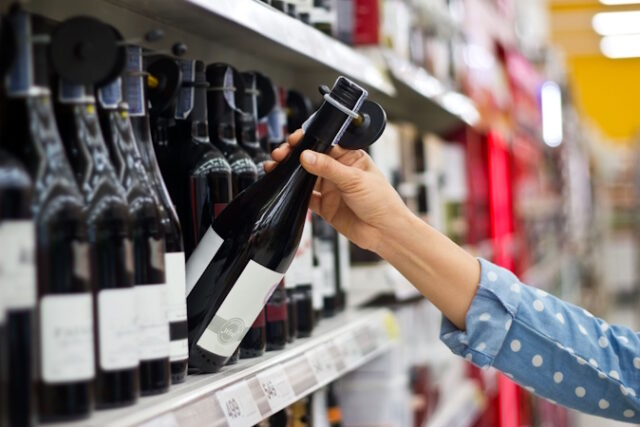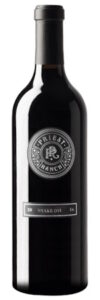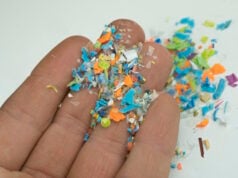
By TOM MARQUARDT and PATRICK DARR
A California wine producer recently recounted an experience in his tasting room that is humorous on its surface but ponderous underneath. A young visitor was reading the tasting notes of a chardonnay and was intrigued.
“At what stage do they add the apricot juice?” she asked.

One of the most controversial descriptors of late is “minerality.” Chemists and professionals argue that you cannot taste minerals in a soil because a vineyard root sucks up water and there isn’t time for elements like potassium and zinc to flavor it. Yet we often see descriptors for wines from Chablis and Loire Valley like “wet stone,” “gunflint” and “chalk” as synonyms for “mineral.” It is used for both the smell and taste of wines.
Champagne vineyards are known for their limestone soil and occasionally we will see a tasting note reflect the steely flavor of limestone. The same goes for many pinot noirs that smell of “forest floor” when the vineyards are nowhere near a forest.
The tasting notes we write reflect what we recall from our time in the kitchen or an orchard. A person who has never had a currant, for instance, is not likely to think of it when tasting a cabernet sauvignon. A person who does not know the difference between lavender and rosemary is not likely to use either one in describing a wine from Cotes du Rhone, yet these words summarize what the French call “garrigue.”
Wine descriptors are not just helpful in communication; they are also helpful in matching wine with food. The minerality typically found in Chablis, for instance, signals a good match with oysters and scallops. A wine with acidity offsets the fattiness of a steak. White wine is not associated with fish because of its color – it is because of its acidity and white fruit flavors that are a better match than red fruit and tannins found in red wines.
Here are five white wines commonly associated with minerality:

Domaine Drouhin Vaudon Chablis 2020 ($30). Grapefruit, citrus, dry and minerally.
Domaine Vacheron Sancerre 2019 ($45). Green apple, lemon rind, grapefruit and minerally.
Surrau “Branu” Vermetino di Gallura 2021 ($20). Peach, lemon and minerals.
Inama “Carbonare Soave Classico 2020 ($30). Old vine Garganega grapes make this a unique wine with apple and pear notes and zesty acidity.
La Valentina Pecorino Colline Pescaresi 2021 ($18). Known more in U.S. for its cheese, pecorino also is known for its austere, steely wines with good acidity, citrus and melon notes.
Cool Australia
Australia’s cool regions produce some excellent chardonnays and pinots that won’t break

the bank. Here are a few we recently enjoyed:
Angove Chardonnay 2021 ($20). Produced from grapes grown in the Mount Lofty range east of McLaren Vale, this pure chardonnay has citrus and apple notes with a long finish. We liked it because it wasn’t over-oaked and had good balance.
Yering Station Pinot Noir 2019 ($35). From grapes grown in the oldest vineyard in Victoria, this Yarra Valley pinot noir is a steal. The cool climate keeps this wine fresh and fruity with black cherry notes.
Mount Langhi Ghiran Billi Billi Shiraz 2021 ($16). From Victoria, the fruit for this shiraz produces lively and delicious black berry character with a hint of spice. Simple, yet delicious.
Pick up the spirit
We tasted two new spirits recently and were sufficiently impressed to record our impressions. Neft Vodka from Austria ($30-35 750ml) comes packaged in unbreakable white mini steel oil barrels and is distilled from rye. Austrian mountain spring water is added to adjust the proof to 80. The vodka is very clean with attractive fruity notes some spice, and a hint of vanilla.
We also tasted and enjoyed Drakes Organic Spiced Rum ($20 750ml) distilled from organically sourced Columbian sugar cane. Very expressive clove cinnamon, and butterscotch dominate with a hint of vanilla. Add this to cream for a great eggnog or simply enjoy straight or over ice.
Wine picks

Cockburn’s Special Reserve Port N/V ($24). Not overly sweet, this port is aged for 5 years in oak to produce an eminently drinkable port. Not overly complex this port features dark sweet cherry notes with a hint of mocha. Good value.
Vara Garnacha Gold Label Vino Tinto Espanol 2020 ($34). Vara was founded in 2012 in New Mexico but it wasn’t until recently its wines were nationally distributed. Its unique concept is to draw grapes across borders and blend them with grapes grown in the United States – a blend of culture and product. Artist Xavier Zamarripa and wine veteran Doug Diefenthaler recruited several established winemakers to craft special wines, including this delicious garnacha. Blended with carinena, monastrell, mencia, and a little caberent sauvignon, merlot and syrah – all from various locations in Spain and California — it is round with ripe cherry, red currant and raspberry notes with a floral nose and soft mouthfeel.
Priest Ranch Snake Oil 2019 ($110). The name comes from the cure-alls that were sold in Napa Valley in the 1800s. This wine may not cure any of your ills, but it will put you in a good mood. From estate-grown cabernet sauvignon, it is classic Napa Valley. Layers of blueberry and blackberry with a hint of mocha notes.
Tom Marquardt and Patrick Darr, MoreAboutWine, posted on SouthFloridaReporter.com
Republished with permission
Tom Marquardt and Patrick Darr have been writing a weekly wine column for more than 30 years. Additional Wine reviews on MoreAboutWine
All photos are randomly selected and do not indicate any preferred wine. Listed prices are subject to change and do not include tax or shipping.
You can send questions to Tom Marquardt marq1948@gmail.com
Always drink responsibly!












